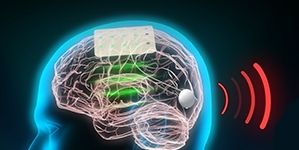
31/03/2016
ICN2 Graphene-Based Sensors for Biomedicine and Brain-Machine Interfaces
ICN2 Graphene-Based Sensors for Biomedicine and Brain-Machine Interfaces
In the graphite tip of a pencil, carbon atoms are arranged in a layered, planar structure forming a honeycomb lattice. Graphene is one of these sheets with only one atom thick.
Within a few years, graphene has become the prime example of a promising material for its numerous properties: resistant and light, flexible and elastic, transparent, conductor of heat and electricity, etc. Graphene has already been awarded a Nobel Prize in 2010 and Graphene Flagship is one of the two current key scientific initiatives of the European Union (Humain Brain Project is the other one) that gathers 142 academic and industrial groups from 23 different countries with 1 billion Euros in funding over the 2013-2023 period.
During the Mobile World Congress held last month, the Institute of Photonic Sciences from Barcelona was on charge of the graphene pavilion in collaboration with the Graphene Flagship initiative. In this booth, new technologies carried out by researchers from the Catalan Institute of Nanoscience and Nanotechnology (ICN2), which is located at the Universitat Autònoma de Barcelona campus (Barcelona Synchrotron Park partner), were presented.
Among these ICN2 applications are graphene-based electronic sensors that could be used for detecting the electrical activity of the brain. These flexible sensors can be used on relatively large areas and their spatial resolution is pretty high. Tests are currently carried out on animals to investigate sleep and epilepsy: these sensors are thought to have therapeutic applications and be used in the design of new brain-machine interfaces.
For more information
Within a few years, graphene has become the prime example of a promising material for its numerous properties: resistant and light, flexible and elastic, transparent, conductor of heat and electricity, etc. Graphene has already been awarded a Nobel Prize in 2010 and Graphene Flagship is one of the two current key scientific initiatives of the European Union (Humain Brain Project is the other one) that gathers 142 academic and industrial groups from 23 different countries with 1 billion Euros in funding over the 2013-2023 period.
During the Mobile World Congress held last month, the Institute of Photonic Sciences from Barcelona was on charge of the graphene pavilion in collaboration with the Graphene Flagship initiative. In this booth, new technologies carried out by researchers from the Catalan Institute of Nanoscience and Nanotechnology (ICN2), which is located at the Universitat Autònoma de Barcelona campus (Barcelona Synchrotron Park partner), were presented.
Among these ICN2 applications are graphene-based electronic sensors that could be used for detecting the electrical activity of the brain. These flexible sensors can be used on relatively large areas and their spatial resolution is pretty high. Tests are currently carried out on animals to investigate sleep and epilepsy: these sensors are thought to have therapeutic applications and be used in the design of new brain-machine interfaces.
For more information
More news
19/06/2014
ALBA synchrotron welcomes the one thousandth researcher
12/06/2014
€ 1.365 billion of foreign investment in the Catalan industry in 2013
03/06/2014
Barcelona Synchroton Park booth at the BioKorea 2014 exhibition in Seoul
27/05/2014
The new Barcelona Synchrotron Park bus shuttle completes its first six months
20/05/2014
SENER opens in the Barcelona Synchrotron Park its new corporate headquarters in Catalonia
15/05/2014
MATGAS, Air Products' leading R&D centre worldwide









